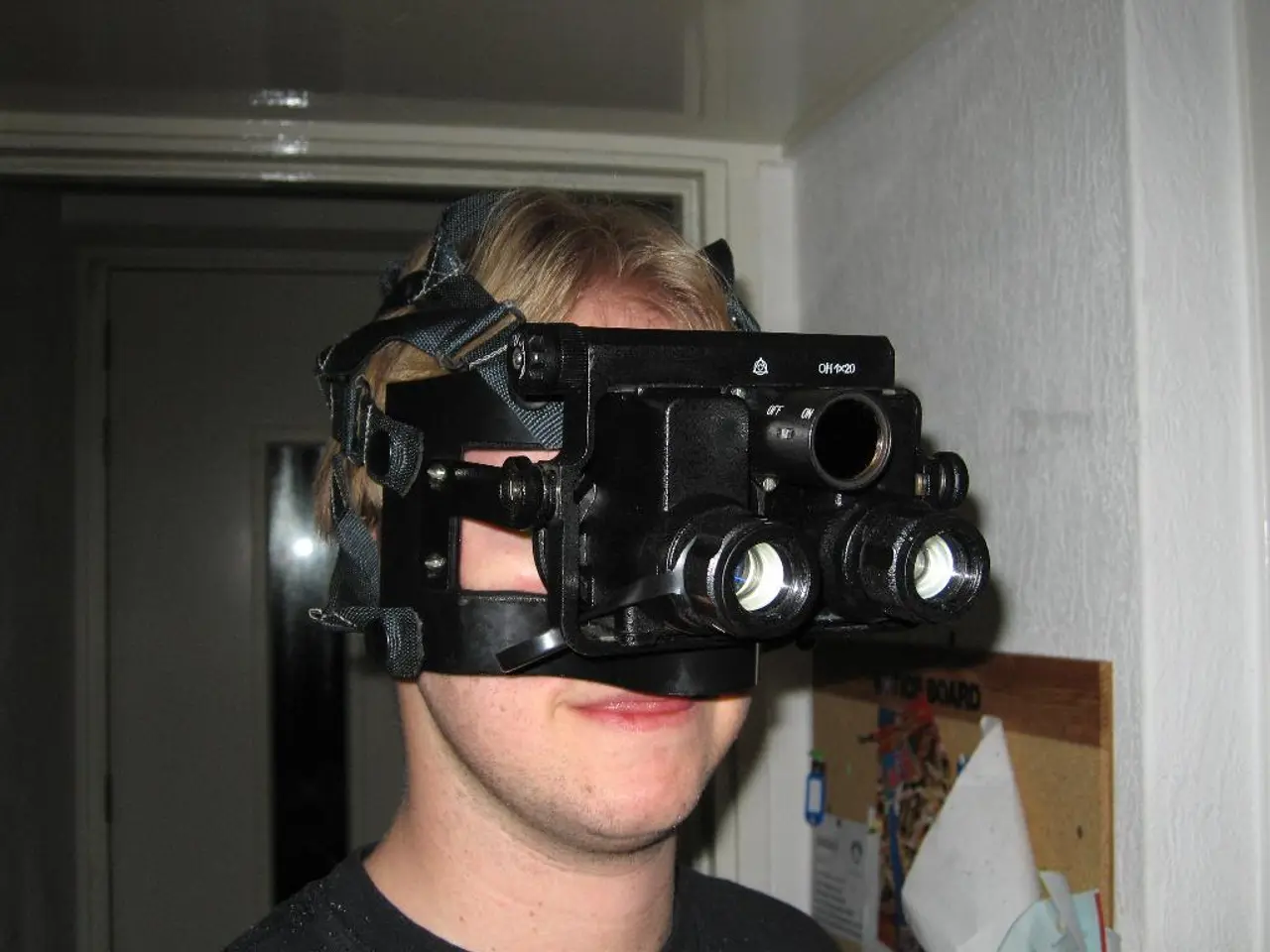Immersive Virtual Emergency Preparation: Realistic Simulations Enhancing Response Efficiency
=================================================================================
In today's fast-paced world, the need for efficient and effective training methods has never been more critical. One technology that is revolutionising emergency training is virtual reality (VR).
VR technology offers significant benefits for emergency training across various industries by creating safe, immersive, and repeatable simulations of high-risk scenarios. It enables learners to practice emergency response procedures without real-world dangers, improving skill mastery, safety awareness, and procedural retention while reducing costs and training time.
Key benefits of VR emergency training include:
- Safety and risk reduction: Trainees experience hazardous events like electrical incidents, gas leaks, or medical emergencies in controlled virtual environments, lowering the chance of actual accidents during training.
- Improved learning outcomes and retention: VR activates multiple senses and supports repetition, which enhances understanding and long-term retention of critical emergency procedures.
- Cost and time efficiency: VR training reduces the need for physical materials, animal or patient use (in medical training), and downtime associated with real training drills, cutting training time by up to 50-80% and costs by over 60% in some cases.
- Uniformity and accessibility: VR provides standardised training experiences regardless of institutional resources or patient availability, ensuring all learners receive consistent exposure to diverse and complex emergencies.
- Engagement and confidence: Immersive scenarios with real-time feedback build trainee engagement and confidence handling emergencies, improving workplace readiness.
The typical workflow for VR emergency training includes:
- Designing scenario-based simulations that replicate realistic high-pressure emergency events.
- Immersive interaction with realistic 3D models and environments, often built from CAD data or medically accurate anatomy, allowing learners to perform procedural tasks from start to finish.
- Repetitive practice with adaptive feedback and performance tracking, enabling refinement of decision-making, procedural accuracy, and response time under simulated stress.
- Progressive complexity and edge-case scenarios that cannot be safely practiced onsite, such as rare emergencies or hazardous exposures, to prepare users for all contingencies.
- Assessment and validation of competence via scenario outcomes and user responses before real-world deployment, improving safety and operational effectiveness.
Industries benefiting from VR emergency training include healthcare, oil and gas, aviation, manufacturing, construction, law enforcement, and defence. In the United States, for instance, companies like Gap Inc. use virtual training for emergency preparedness across its retail, corporate, and distribution facilities.
In the healthcare sector, VR medical training can be beneficial for employees, offering a safer and more efficient way to learn lifesaving skills. Customizable VR training programs include First Aid, Fire Safety (Office), and Confined Space training. For highly hazardous industries such as chemical enterprises and nuclear power plants, regular high-performance training is essential due to the risk of disaster. VR training significantly increases learning productivity compared to traditional methods.
Road crashes result in the deaths of approximately 1.3 million people annually, while in the workplace, 4,764 fatal work injuries were recorded in 2020. VR construction training can prevent various scale emergencies at workplaces, offering safety as students train in a virtual world without endangering their lives and health.
The development of custom all-in-one software provides a long-term solution for training needs, offering complex emergency scenarios in VR training that teach the correct sequence and set of actions in a multi-dangerous case. The custom software development company [Our Website] has 30 years of experience in AR/VR-based projects and can develop a VR emergency training solution tailored to your industry's needs.
In conclusion, VR emergency training leverages immersive, repeatable, and adaptable virtual simulations to enhance safety, reduce costs, and improve emergency preparedness across diverse professional fields. It functions by enabling realistic scenario practice, feedback-driven skill development, and procedural standardization in a risk-free environment. With approximately 6,800 natural disasters occurring worldwide every year, the need for efficient and effective emergency training methods has never been more important. Embrace the future of training with VR technology.
[1] Virtual Reality for Emergency Training: Applications and Benefits [2] Virtual Reality Training: The Future of Healthcare Education [3] Virtual Reality Training: A Review of the Literature [4] Virtual Reality in Safety Training: A Case Study of a Large Retail Company [5] Virtual Reality in Aviation Training: A Review of the Literature
- The advancement of virtual reality (VR) technology in the corporate world is transforming education-and-self-development, particularly in the area of emergency training.
- In the realm of mobile apps, custom software solutions are being developed to facilitate virtual reality learning, catering to diverse industries such as healthcare, oil and gas, aviation, and construction.
- These custom software solutions offer simulation-based learning for crucial emergency procedures, ensuring uniformity and accessibility in training.
- By creating safe, immersive, and repeatable simulations of high-risk scenarios, VR technology offers significant benefits in terms of skill mastery, safety awareness, and procedural retention.
- For industries at high risk of disaster, such as chemical enterprises and nuclear power plants, VR training solutions can increase learning productivity compared to traditional methods.
- In scenarios where real-world practice might be harmful or impossible, VR technology enables the repetition of edge-case scenarios, preparing learners for all contingencies.
- As VR technology continues to evolve, it promises to revolutionise not just emergency training but also other forms of learning and self-development.
- In a time when approximately 6,800 natural disasters occur worldwide each year, the implementation of efficient and effective VR training solutions says much about a company's commitment to safety, innovation, and the future of education.




